Kraków
Kraków (Polish: [ˈkrakuf] ), also seen spelled Cracow or absent Polish diacritics as Krakow, is the second-largest and one of the oldest cities in Poland. Situated on the Vistula River in Lesser Poland Voivodeship, the city dates back to the seventh century. Kraków was the official capital of Poland until 1596 and has traditionally been one of the leading centres of Polish academic, economic, cultural and artistic life. Cited as one of Europe's most beautiful cities, its Old Town with Wawel Royal Castle was declared a UNESCO World Heritage Site in 1978, one of the world's first sites granted the status.
The city has grown from a Stone Age settlement to Poland's second-most-important city. It began as a hamlet on Wawel Hill and was reported by Ibrahim ibn Yaqub, a 10th-century merchant from Córdoba, as...Read more
Kraków (Polish: [ˈkrakuf] ), also seen spelled Cracow or absent Polish diacritics as Krakow, is the second-largest and one of the oldest cities in Poland. Situated on the Vistula River in Lesser Poland Voivodeship, the city dates back to the seventh century. Kraków was the official capital of Poland until 1596 and has traditionally been one of the leading centres of Polish academic, economic, cultural and artistic life. Cited as one of Europe's most beautiful cities, its Old Town with Wawel Royal Castle was declared a UNESCO World Heritage Site in 1978, one of the world's first sites granted the status.
The city has grown from a Stone Age settlement to Poland's second-most-important city. It began as a hamlet on Wawel Hill and was reported by Ibrahim ibn Yaqub, a 10th-century merchant from Córdoba, as a busy trading centre of Central Europe in 985. With the establishment of new universities and cultural venues at the emergence of the Second Polish Republic in 1918 and throughout the 20th century, Kraków reaffirmed its role as a major national academic and artistic centre. As of 2023, the city has a population of 804,237, with approximately 8 million additional people living within a 100 km (62 mi) radius of its main square.
After the invasion of Poland by Nazi Germany at the start of World War II, the newly defined Distrikt Krakau (Kraków District) became the capital of Germany's General Government. The Jewish population of the city was forced into a walled zone known as the Kraków Ghetto, from where they were sent to Nazi extermination camps such as the nearby Auschwitz, and Nazi concentration camps like Płaszów. However, the city was spared from destruction and major bombing.
In 1978, Karol Wojtyła, archbishop of Kraków, was elevated to the papacy as Pope John Paul II—the first non-Italian pope in 455 years. Also that year, UNESCO approved Kraków's entire Old Town and historic centre and the nearby Wieliczka Salt Mine as Poland's first World Heritage Sites. Kraków is classified as a global city with the ranking of "high sufficiency" by the Globalization and World Cities Research Network. Its extensive cultural heritage across the epochs of Gothic, Renaissance and Baroque architecture includes Wawel Cathedral and Wawel Royal Castle on the banks of the Vistula, St. Mary's Basilica, Saints Peter and Paul Church and the largest medieval market square in Europe, Rynek Główny. Kraków is home to Jagiellonian University, one of the oldest universities in the world and traditionally Poland's most reputable institution of higher learning. The city also hosts a number of institutions of national significance such as the National Museum, Kraków Opera, Juliusz Słowacki Theatre, National Stary Theatre and the Jagiellonian Library. The city is served by John Paul II International Airport, the country's second busiest airport and the most important international airport for the inhabitants of south-eastern Poland.
In 2000, Kraków was named European Capital of Culture. In 2013, Kraków was officially approved as a UNESCO City of Literature. The city hosted World Youth Day in 2016 and the European Games in 2023.
 The Romanesque St. Leonard's Crypt, which dates back to the 11th century, when Casimir I the Restorer made Kraków his royal residence and the capital of the Kingdom of Poland
The Romanesque St. Leonard's Crypt, which dates back to the 11th century, when Casimir I the Restorer made Kraków his royal residence and the capital of the Kingdom of PolandKraków's early history begins with evidence of a Stone Age settlement on the present site of the Wawel Hill.[1] A legend attributes Kraków's founding to the mythical ruler Krakus, who built it above a cave occupied by a dragon, Smok Wawelski. The first written record of the city's name dates back to 965, when Kraków was described as a notable commercial centre controlled first by Moravia (876–879), but captured by a Bohemian duke Boleslaus I in 955.[2] The first acclaimed ruler of Poland, Mieszko I, took Kraków from the Bohemians and incorporated it into the holdings of the Piast dynasty towards the end of his reign.[3]
In 1038, Kraków became the seat of the Polish government.[4] By the end of the tenth century, the city was a leading centre of trade.[5] Brick buildings were constructed, including the Royal Wawel Castle with St. Felix and Adaukt Rotunda, Romanesque churches such as St. Andrew's Church, a cathedral, and a basilica.[6] The city was sacked and burned during the Mongol invasion of 1241.[7] It was rebuilt practically identically,[8] based on new location act and incorporated in 1257 by the high duke Bolesław V the Chaste who following the example of Wrocław, introduced city rights modelled on the Magdeburg law allowing for tax benefits and new trade privileges for the citizens.[9] In 1259, the city was again ravaged by the Mongols. A third attack in 1287 was repelled thanks in part to the newly built fortifications.[10]
 Woodcut of Kraków from the Nuremberg Chronicle, 1493
Woodcut of Kraków from the Nuremberg Chronicle, 1493In 1335, King Casimir III the Great (Polish: Kazimierz) declared the two western suburbs to be a new city named after him, Kazimierz (Latin: Casimiria). The defensive walls were erected around the central section of Kazimierz in 1362, and a plot was set aside for the Augustinian order next to Skałka.[11] The city rose to prominence in 1364, when Casimir founded the University of Kraków,[12] the second oldest university in central Europe after the Charles University in Prague.
The city continued to grow under the Jagiellonian dynasty. As the capital of the Kingdom of Poland and a member of the Hanseatic League, the city attracted many craftsmen from abroad,[13] businesses, and guilds as science and the arts began to flourish.[14] The royal chancery and the university ensured a first flourishing of Polish literary culture in the city.[15]
Kraków's "Golden Age"The 15th and 16th centuries were known as Poland's Złoty Wiek or Golden Age.[16] Many works of Polish Renaissance art and architecture were created,[17][18] including ancient synagogues in Kraków's Jewish quarter located in the north-eastern part of Kazimierz, such as the Old Synagogue.[19] During the reign of Casimir IV, various artists came to work and live in Kraków, and Johann Haller established a printing press in the city[20] after Kasper Straube had printed the Calendarium Cracoviense, the first work printed in Poland, in 1473.[21][22]
In 1520, the most famous church bell in Poland, named Zygmunt after Sigismund I of Poland, was cast by Hans Behem.[23] At that time, Hans Dürer, a younger brother of artist and thinker Albrecht Dürer, was Sigismund's court painter.[24] Hans von Kulmbach made altarpieces for several churches.[25] In 1553, the Kazimierz district council gave the Jewish Qahal (council of a Jewish self-governing community) a licence for the right to build their own interior walls across the western section of the already existing defensive walls. The walls were expanded again in 1608 due to the growth of the community and influx of Jews from Bohemia.[26] In 1572, King Sigismund II, the last of the Jagiellons, died childless. The Polish throne passed to Henry III of France and then to other foreign-based rulers in rapid succession, causing a decline in the city's importance. Furthermore, in 1596, Sigismund III of the House of Vasa moved the administrative capital of the Polish–Lithuanian Commonwealth from Kraków to Warsaw.[27] The city was destabilised by pillaging in the 1650s during the Swedish invasion, especially during the 1655 siege.[28] Later in 1707, the city underwent an outbreak of bubonic plague that left 20,000 of the city's residents dead.[29]
19th century Tadeusz Kościuszko takes the oath of loyalty to the Polish nation in Kraków's market square (Rynek), 1794.
Tadeusz Kościuszko takes the oath of loyalty to the Polish nation in Kraków's market square (Rynek), 1794.Already weakened during the 18th century, by the mid-1790s the Polish–Lithuanian Commonwealth had twice been partitioned by its neighbors: Russia, the Habsburg empire and Prussia.[30] In 1791, the Holy Roman Emperor Leopold II changed the status of Kazimierz as a separate city and made it into a district of Kraków. The richer Jewish families began to move out. However, because of the injunction against travel on the Sabbath, most Jewish families stayed relatively close to the historic synagogues. In 1794, Tadeusz Kościuszko initiated an unsuccessful insurrection in the town's Main Square which, in spite of his victorious Battle of Racławice against a numerically superior Russian army, resulted in the third and final partition of Poland.[31]
In 1802, German became the town's official language. Of the members appointed by the Habsburgs to the municipal council only half were Polish.[32] From 1796 to 1809, the population of the city rose from 22,000 to 26,000 with an increasing percentage of nobles and officials.[32] In 1809, Napoleon Bonaparte captured former Polish territories from Austria and made the town part of the Duchy of Warsaw.[32] During the time of the Duchy of Warsaw, requirements to upkeep the Polish army followed by tours of Austrian, Polish and Russian troops, plus Russian occupation and a flood in the year 1813 all added up to the adverse development of the city with a high debt burden on public finances and many workshops and trading houses needing to close their activities.[32]
 Act of granting the constitution to the Free City of Krakow. After the Partitions of Poland, Kraków became a city-state and remained the only piece of sovereign Polish territory between 1815 and 1846.
Act of granting the constitution to the Free City of Krakow. After the Partitions of Poland, Kraków became a city-state and remained the only piece of sovereign Polish territory between 1815 and 1846.Following Napoleon's defeat, the 1815 Congress of Vienna restored the pre-war boundaries but also created the partially independent and neutral Free City of Kraków.[32] In addition to the historic city of Krakow itself, the Free City included the towns of Chrzanow, Trzebinia and Nowa Gora and 224 villages. Outside the city, mining and metallurgy started developing. The population of Krakow itself grew in this time from 23,000 to 43,000; that of the overall republic from 88,000 to 103,000. The population of the city had an increasing number of Catholic clergy, officials and intelligentsia with which the rich townspeople sympathised. They were opposed to the conservative landed aristocracy who also were drawn more and more to the city real estates even though their income still mainly came from their agricultural possessions in the Republic, the Kingdom of Poland and Galicia. The percentage of the Jewish population in the city also increased in this time from 20.8% to 30.4%. However, nationalist sentiment and other political issues led to instability; this culminated in the Krakow Uprising of 1846, which was crushed by the Austrian authorities.[33] The Free City was therefore annexed into the Austrian Empire as the Grand Duchy of Krakow (Polish: Wielkie Księstwo Krakowskie, German: Großherzogtum Krakau), which was legally separate from but administratively part of the Kingdom of Galicia and Lodomeria (more simply Austrian Galicia).[34]
During the era of the free city, a free trade zone led to positive economic development. But because of the unstable political situation and insecurity about the future, not much of the accumulated wealth was invested.[32] Through the increase of taxes, customs and regulations, prices soared and the city fell into a recession. From 1844 to 1850 the population was diminished by over 4,000 inhabitants.[32]
In 1866, Austria granted a degree of autonomy to Galicia after its own defeat in the Austro-Prussian War.[35] Kraków, being politically freer than the Polish cities under Prussian (later German) and Russian rule, became a Polish national symbol and a centre of culture and art, known frequently as the "Polish Athens" (Polskie Ateny). Many leading Polish artists of the period resided in Kraków,[36] among them the seminal painter Jan Matejko,[37] laid to rest at Rakowicki Cemetery, and the founder of modern Polish drama, Stanisław Wyspiański.[38] Fin de siècle Kraków evolved into a modern metropolis; running water and electric streetcars were introduced in 1901, and between 1910 and 1915, Kraków and its surrounding suburban communities were gradually combined into a single administrative unit called Greater Kraków (Wielki Kraków).[39][40]
At the outbreak of World War I on 3 August 1914, Józef Piłsudski formed a small cadre military unit, the First Cadre Company—the predecessor of the Polish Legions—which set out from Kraków to fight for the liberation of Poland.[41] The city was briefly besieged by Russian troops in November 1914.[42] Austrian rule in Kraków ended in 1918 when the Polish Liquidation Committee assumed power.[43][44]
20th century to the present Flower vendors in Rynek. First autochrome in Poland, dated 1912.
Flower vendors in Rynek. First autochrome in Poland, dated 1912.Following the emergence of the Second Polish Republic in 1918, Kraków resumed its role as a major Polish academic and cultural centre, with the establishment of new universities such as the AGH University of Science and Technology and the Jan Matejko Academy of Fine Arts, including several new and essential vocational schools. The city became an important cultural centre for Polish Jews, including both Zionist and Bundist groups.[45][46][47] Kraków was also an influential centre of Jewish spiritual life, with all its manifestations of religious observance - from Orthodox to Hasidic and Reform Judaism - flourishing side by side.[48]
Following the invasion of Poland by Nazi Germany in September 1939, the city of Kraków became part of the General Government, a separate administrative region of the Third Reich. On 26 October 1939, the Nazi régime set up Distrikt Krakau, one of a total of four districts within the General Government. On the same day, the city of Kraków also became the capital of the administration.[49] The General Government was ruled by Governor-General Hans Frank, who was based in the city's Wawel Castle. The Nazis envisioned turning Kraków into a completely Germanised city; after removal of all the Jews and Poles, renaming of locations and streets into the German language, and sponsorship of propaganda trying to portray it as a historically German city.[50] On 28 November 1939 Hans Frank set up Judenräte ('Jewish Councils') to be run by Jewish citizens for the purpose of carrying out orders for the Nazis. These orders included the registration of all Jewish people living in each area, the collection of taxes, and the formation of forced-labour groups. The Polish Home Army maintained a parallel underground administrative system.[51]
On the eve of World War II some 56,000 Jews resided in Krakow, almost one-quarter of a total population of about 250,000. By November 1939, the Jewish population of Krakow had grown to approximately 70,000.[52][53] According to German statistics from 1940, over 200,000 Jews lived within the entire Kraków District, comprising more than 5 percent of the total population in the district. These statistics, however, probably underestimate the situation.[53]
In November 1939, during an operation known as "Sonderaktion Krakau", the Germans arrested more than 180 university professors and academics and sent them to the Sachsenhausen and Dachau concentration camps, though the survivors were later released on the request of prominent Italians.[54][55]
 Kraków Ghetto, 1942—a German checkpoint during operation Aktion Krakau
Kraków Ghetto, 1942—a German checkpoint during operation Aktion KrakauBefore the formation of ghettos, which began in the Distrikt in December 1939, Jews were encouraged to flee the city. For those who remained the German authorities decided in March 1941 to allocate a then suburban neighborhood, Podgórze District, to become Kraków's ghetto - there many Jews would die of illness or starvation. Initially, most ghettos were open and Jews were allowed to enter and exit freely. However, with time ghettos were generally closed and security became tighter. From autumn 1941, the SS developed the policy of Extermination through labour,[56] which further worsened the already bleak conditions for Jews. The ghetto inhabitants were later murdered or sent to German Extermination camps, including Bełżec and Auschwitz, and to Kraków-Płaszów concentration camp.[57] The largest deportations within the Distrikt occurred from June to September 1942. More specifically, the Kraków ghetto deportation occurred in the first week of June 1942,[53] and in March 1943 the ghetto was definitely liquidated.[58]
Roman Polanski, the film director, survived the Kraków ghetto. Oskar Schindler selected employees from the ghetto to work in his enamelware factory Deutsche Emailwaren Fabrik (Emalia for short), saving them from the camps.[59][60] Similarly, many men capable of physical labor were saved from the deportations to extermination camps and instead sent to labor camps across the General Government.[53] By September 1943, the last of the Jews from the Kraków ghetto had been deported. Although looted by occupational authorities, Kraków remained relatively undamaged at the end of World War II,[61] with most of the city's historical and architectural legacy spared. Soviet forces under the command of Marshal Ivan Konev entered the city on 18 January 1945, and began arresting Poles loyal to the Polish government-in-exile or those who had served in the Home Army.[62]
 Kraków's territorial growth from the late 18th to the 20th century
Kraków's territorial growth from the late 18th to the 20th centuryAfter the war, under the Polish People's Republic (officially declared in 1952), the intellectual and academic community of Kraków came under complete political control. The universities were soon deprived of printing rights and autonomy.[63] The Stalinist government of Poland ordered the construction of the country's largest steel mill in the newly created suburb of Nowa Huta.[64] The creation of the giant Lenin Steelworks (now Sendzimir Steelworks owned by Mittal) sealed Kraków's transformation from a university city into an industrial centre.[65]
In an effort that spanned two decades, Karol Wojtyła, cardinal archbishop of Kraków from 1964 to 1978, successfully lobbied for permission to build the first churches in the newly-industrial suburbs.[65][66] In 1978 the Catholic Church elevated Wojtyła to the papacy as John Paul II, the first non-Italian pope in 455 years. In the same year, UNESCO, following the application of local authorities, placed Kraków Old Town on the first list of World Heritage Sites.[67]



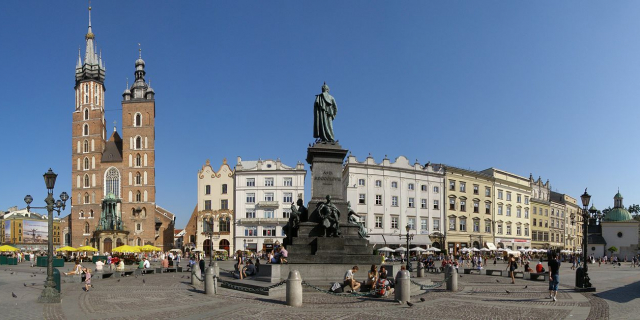









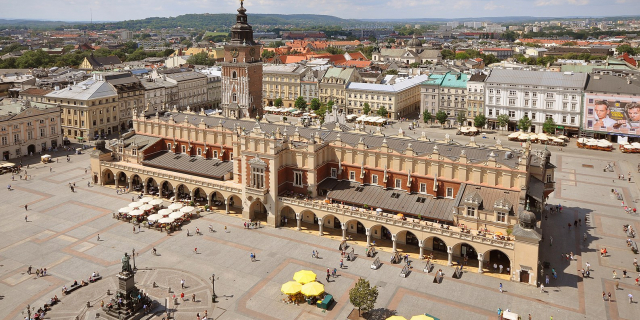



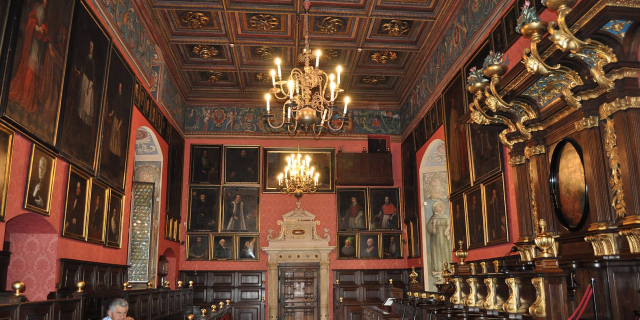
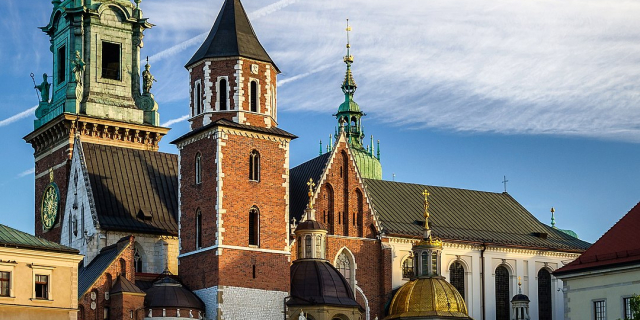
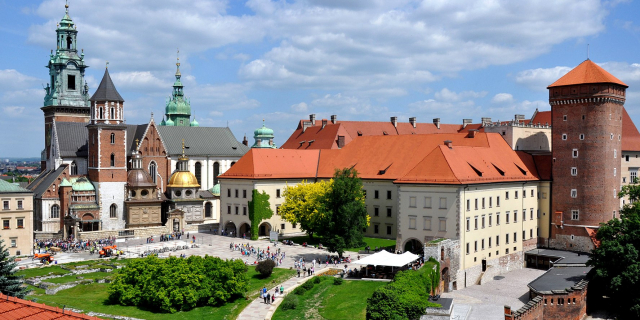
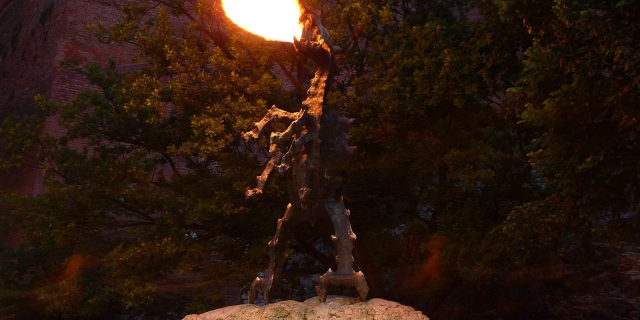

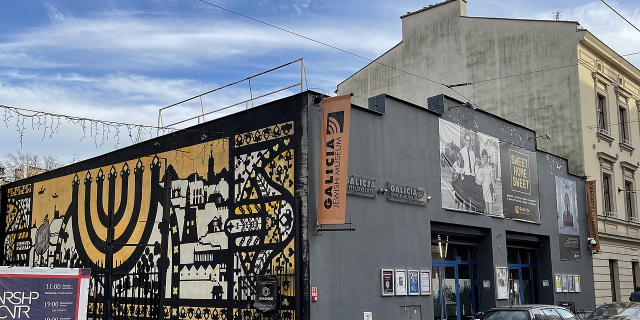


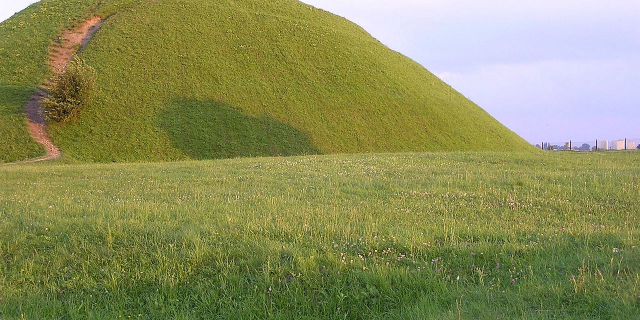






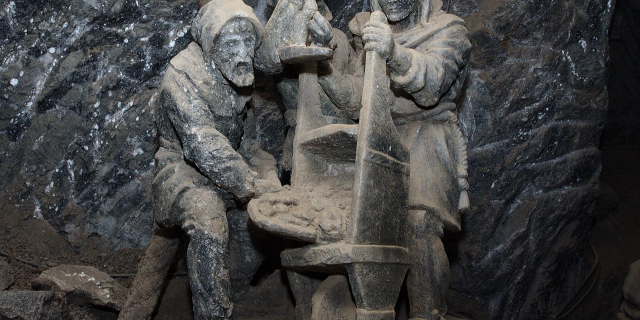

Add new comment